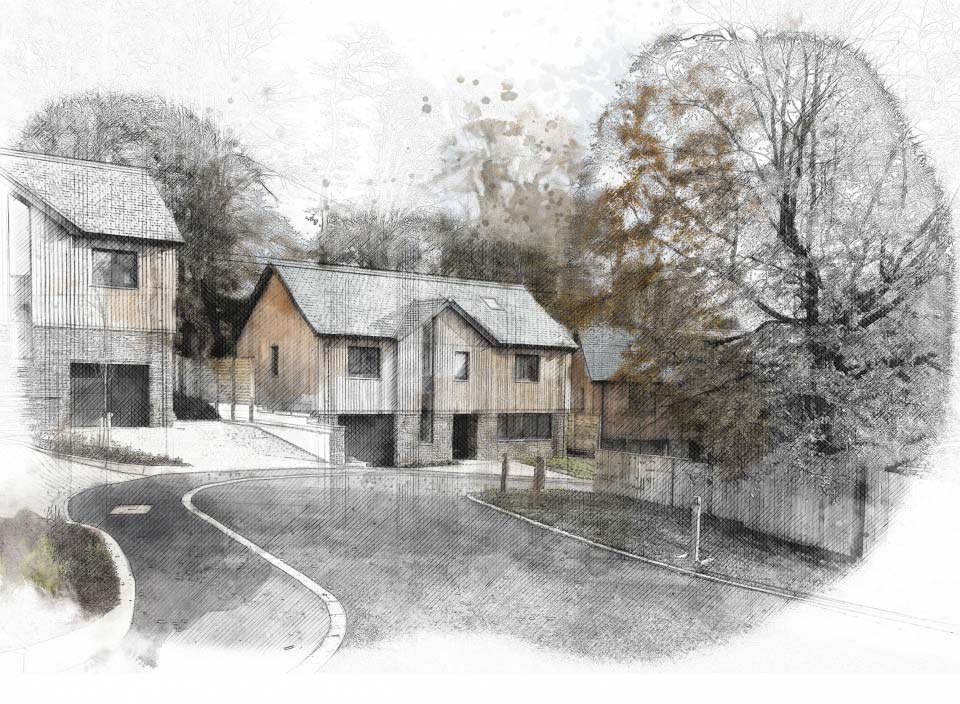By Mark Dawes, Managing Director, CAD Architects.
According to recent figures from the Home Builders Federation, a total of 293,127 new homes were granted planning permission in 2016. This was the highest figure for new approvals in ten years. It is good news that we are seeing some progress on this aspect of residential architecture in the UK.
However, as the Federation themselves point out, the number of permissions granted is usually not reflected in the number of homes being completed. A number of factors influence delivery of housing schemes and these include:
- The economy, and in particular the availability of new mortgages
- The prevailing planning environment and how this is reflected in local planning policy
- The view of the large housebuilders and the speed at which they can sell their houses
- The availability of key infrastructure such as roads and sewers and the willingness and ability of statutory providers to help facilitate property development.
The Economy
The “Help to Buy” scheme run by the government has undoubtedly has had a significant positive impact on new home sales:
- over the period since the launch of the Help to Buy scheme (1 April 2013 to 31 March 2017), a total of 120,864 property sales were completed with the support of the scheme
- the majority of sales were to first-time buyers (97,578) representing 81% of total sales
- the average purchase price was £236,041
- the top 6 local authorities in terms of completed sales are Wiltshire (2,021), Central Bedfordshire (1,710), Leeds (1,704), Wakefield (1,611), County Durham (1,574) and Bedford (1,489)
Housing need remains high and in Cornwall in particular all Parish and Town Councils report significant need, through their housing need surveys. However the economy of Cornwall is complex, with many high value coastal areas squeezing out local buyers and other ex-mining depressed areas suffering from a low wage economy.
Without Help to Buy and the first-time buyers it brings, the housing market may stagnate further as first-time buyers struggle to find deposits.
Planning Policy in Cornwall
The Cornwall Local Plan has sought to address in part the above economic issues through recognition of the fractured economy and has established “value zones”. These zones recognise the particular economic make-up of the individual Parishes and Towns and adjust affordable housing provision accordingly. These form part of Cornwall’s Housing Policy contained in the Cornwall Local Plan.
The Council are presently engaged in the process of their “Allocations Development Plan Document”. This document seeks to identify the specific land to be used to realise the aspirations of the Cornwall Local Plan.
Just as Cornwall Council were obliged by Central Government to produce the Local Plan, they are also required to demonstrate that they are delivering the housing targets set out in the plan. The Allocations DPD is the means by which Cornwall Council seek to encourage development. However, development only takes place where there is a willing land owner and a willing developer, working together.
Some of the land detailed in the Allocations DPD will not come forward because the land owner does not wish to see it developed, other sites will not progress because the house builder controlling the land does not wish to commence work. It is therefore imperative that the Council continue to seek sites with the magic combination of a willing land owner and developer. Cornwall Council is actively seeking land outside the Allocations DPD for potential development.
CAD Architects and development consultancy
CAD Architects is intimately involved with the Local Plan and the Allocations DPD and we regularly meet with senior officers at Cornwall Council. Our knowledge of the constantly evolving but current situation is essential in giving advice to land owners and developers.
Because of Government focus on “localism”, it is essential for your consultant to be aware of the needs, policies and aspirations at all levels of Government. CAD Architects as a matter of course consider effective engagement with the Parish and Town Councils to be essential in propagating a positive momentum for any planning application.
All planning applications require the compilation of a strategy and the larger the application the more time needs to be spent in wide consultation with the Councils and the Public and other stakeholders.
CAD Architects have a wealth of experience in this area and have helped their clients to achieve consent for housing developments of between 5 and 900 dwellings. CAD Architects are presently representing clients for a 55 acres scheme with 2,000 student beds. In these situations, the role we fulfil for our clients is much more strategic that artistic and our knowledge of property development is essential to the success of the application.
